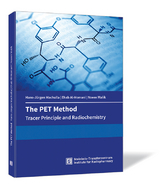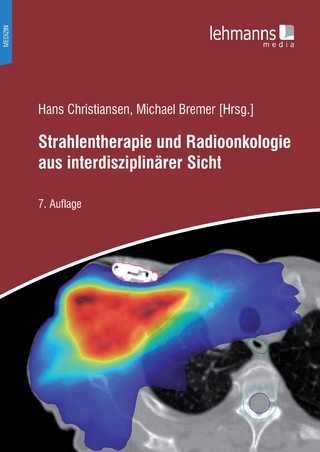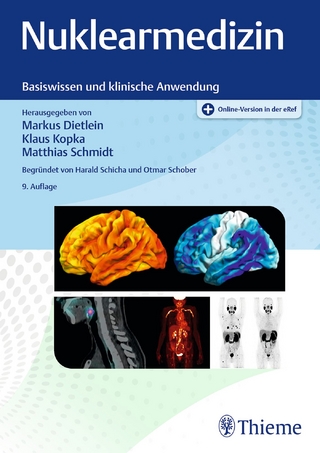The PET Method
Tracer Principle and Radiochemistry
Seiten
2016
Steinbeis-Edition (Verlag)
978-3-95663-081-1 (ISBN)
Steinbeis-Edition (Verlag)
978-3-95663-081-1 (ISBN)
In medicine beside CT and MRT, Positron Emission Tomography (PET) is one of the Molecular Imaging modalities. Yet, beyond imaging, PET exhibits the truly unique feature to assess metabolic processes ongoing within the organism by registration outside the body.
Typical PET radionuclides have short half-lives and, consequently, the compounds labeled in such a way (tracers) have a very low mass like 10 -6 g and even less as administered in a whole body dose. Therefore, those tracers allow to “trace” the biochemical processes of interest directly within the organism without alteration. As a general method, control of therapy is realized directly by PET measurement analyzing corresponding metabolic alterations and thus in case of lacking response therapeutic strategy can be changed. That holds for oncological and neuro-psychiatric diseases. Even more, the possibility of a direct transfer from the in-vitro to the in-vivo level, i. e. the translation from the static to the dynamic biological system, is the key feature of the PET Method in drug development.
The book describes and explains applications of the PET Method (PET-CT, PET-MRT) in both research and clinical diagnostics to students and colleagues in the neighboring disciplines in science and medicine.
Typical PET radionuclides have short half-lives and, consequently, the compounds labeled in such a way (tracers) have a very low mass like 10 -6 g and even less as administered in a whole body dose. Therefore, those tracers allow to “trace” the biochemical processes of interest directly within the organism without alteration. As a general method, control of therapy is realized directly by PET measurement analyzing corresponding metabolic alterations and thus in case of lacking response therapeutic strategy can be changed. That holds for oncological and neuro-psychiatric diseases. Even more, the possibility of a direct transfer from the in-vitro to the in-vivo level, i. e. the translation from the static to the dynamic biological system, is the key feature of the PET Method in drug development.
The book describes and explains applications of the PET Method (PET-CT, PET-MRT) in both research and clinical diagnostics to students and colleagues in the neighboring disciplines in science and medicine.
| Erscheinungsdatum | 07.11.2016 |
|---|---|
| Verlagsort | Stuttgart |
| Sprache | englisch |
| Maße | 148 x 210 mm |
| Einbandart | gebunden |
| Themenwelt | Medizinische Fachgebiete ► Radiologie / Bildgebende Verfahren ► Nuklearmedizin |
| Medizinische Fachgebiete ► Radiologie / Bildgebende Verfahren ► Radiologie | |
| Technik | |
| Schlagworte | Clinical diagnostics • Molecular Imagine • PET-Method |
| ISBN-10 | 3-95663-081-5 / 3956630815 |
| ISBN-13 | 978-3-95663-081-1 / 9783956630811 |
| Zustand | Neuware |
| Haben Sie eine Frage zum Produkt? |
Mehr entdecken
aus dem Bereich
aus dem Bereich
Buch | Softcover (2022)
Lehmanns Media (Verlag)
39,95 €
Lehrbuch für Breast Care Nurses und Fachpersonen in der Onkologie
Buch | Hardcover (2020)
Hogrefe (Verlag)
50,00 €




